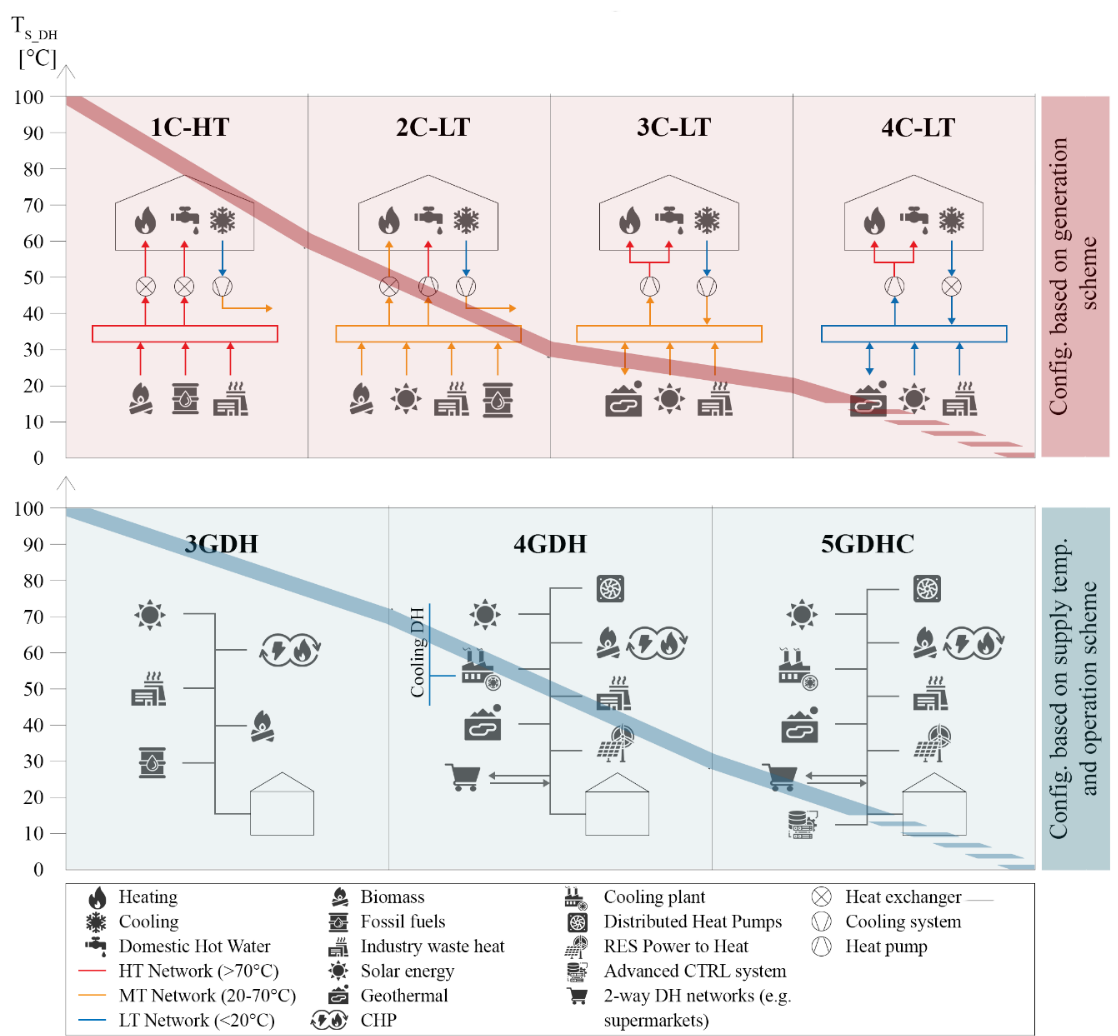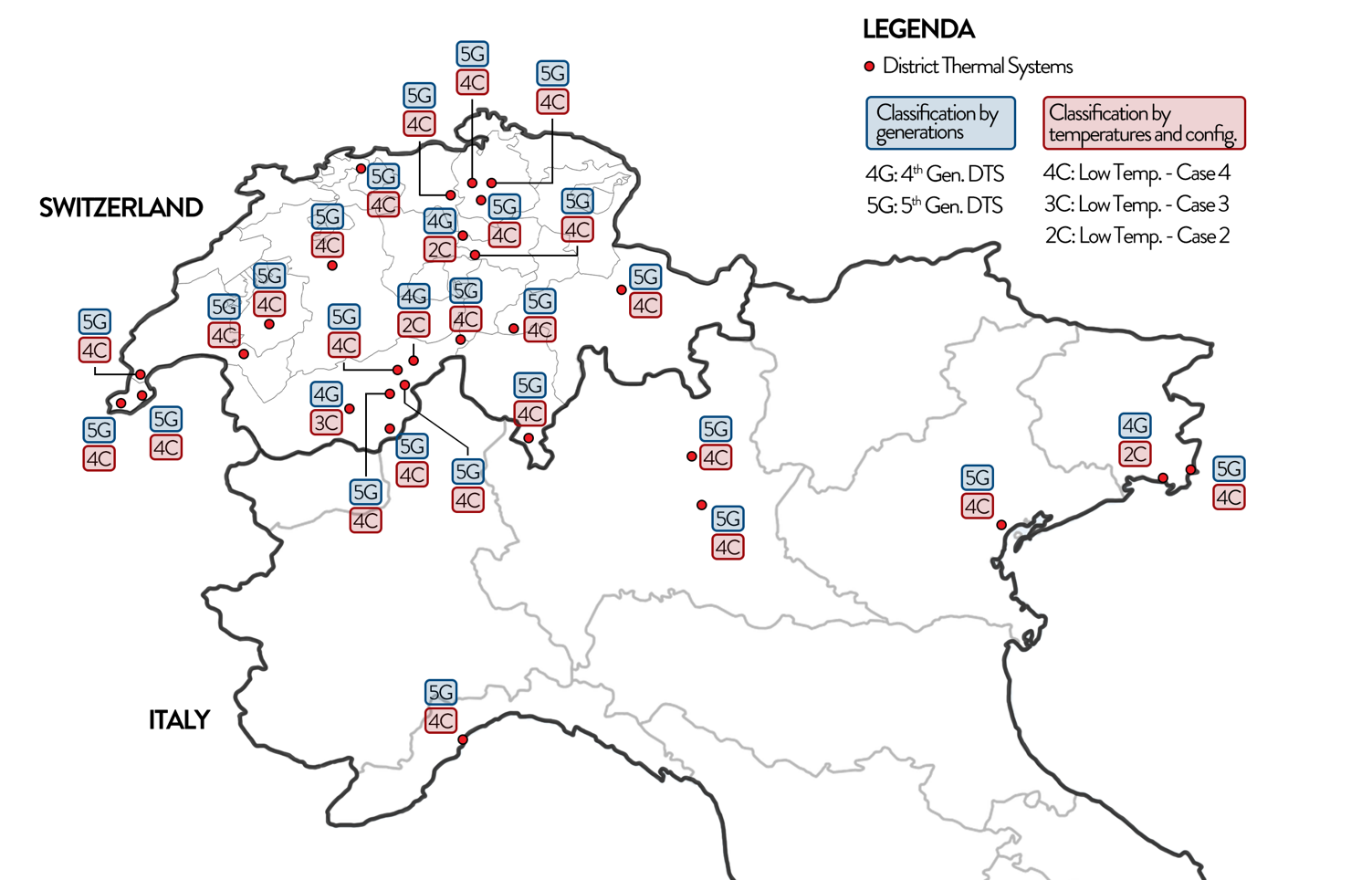Recent progress in District Thermal Systems (DTS) has followed the development of technologies and energy policies over the years resulting in different configurations and operative schemes.
The expression DTS has been here adopted, instead of District Heating (DH) and/or District Cooling (DC), indicating a system of pipe connected one side to final users (that can also be a prosumer) for each type of thermal uses and the other side to available heat sources, regardless of their level of temperature, size, and complexity.
To that end, the possibility of managing DTS in a bidirectional and unmanaged way can bring interesting opportunities. The present contribution reviews the different classifications of DTS provided in the technical literature.
The European framework of DTS is then analyzed, with particular insights into the Italian and Swiss operative context. Currently, DTS have a marginal role in these two countries and can mainly be classified as high-temperature or mid-generation systems. However, there are also innovative systems on which the attention of the involved stakeholders is focusing.
The technological features of DTS are discussed to provide possible challenging evolutive scenarios to enhance their performance and economic appeal through the evaluation of successful recent examples. DTS have been analyzed referring to two complementary classifications, underlining that the one based on generations (G) allows a more detailed analysis about older systems (1GDH, 2GDH, and 3GDH instead of the only 1C-HT class, that is Case 1 High Temperature). In contrast, the one based on supply temperature and the operational scheme allows a more detailed analysis of the most recent systems (2C-LT, 3C-LT, and 3C-LT instead of 4GDH and 5GDHC).
Further reading:
Caputo, P., Ferla, G., Belliardi, M., & Cereghetti, N. (2021). District thermal systems: State of the art and promising evolutive scenarios. A focus on Italy and Switzerland. Sustainable Cities and Society, 65, 102579, https://doi.org/10.1016/j.scs.2020.102579

